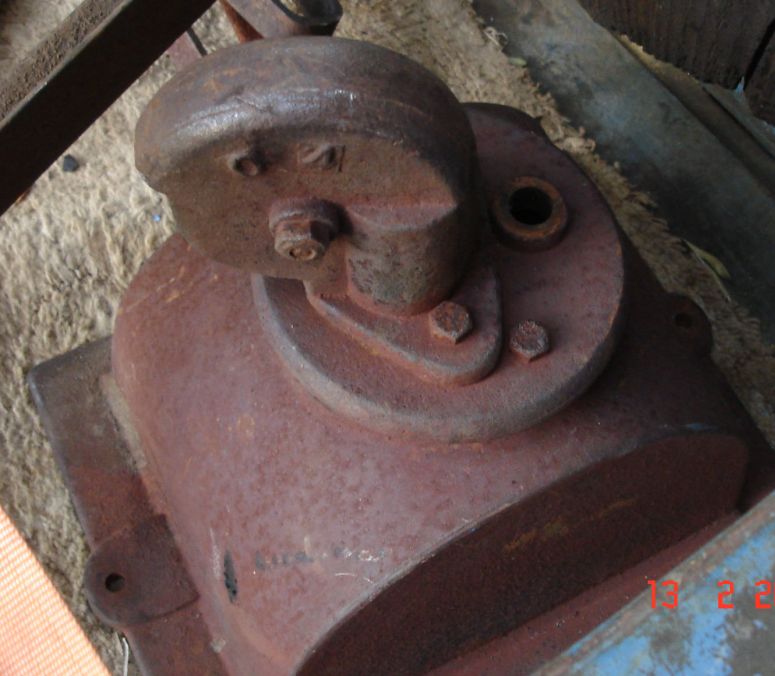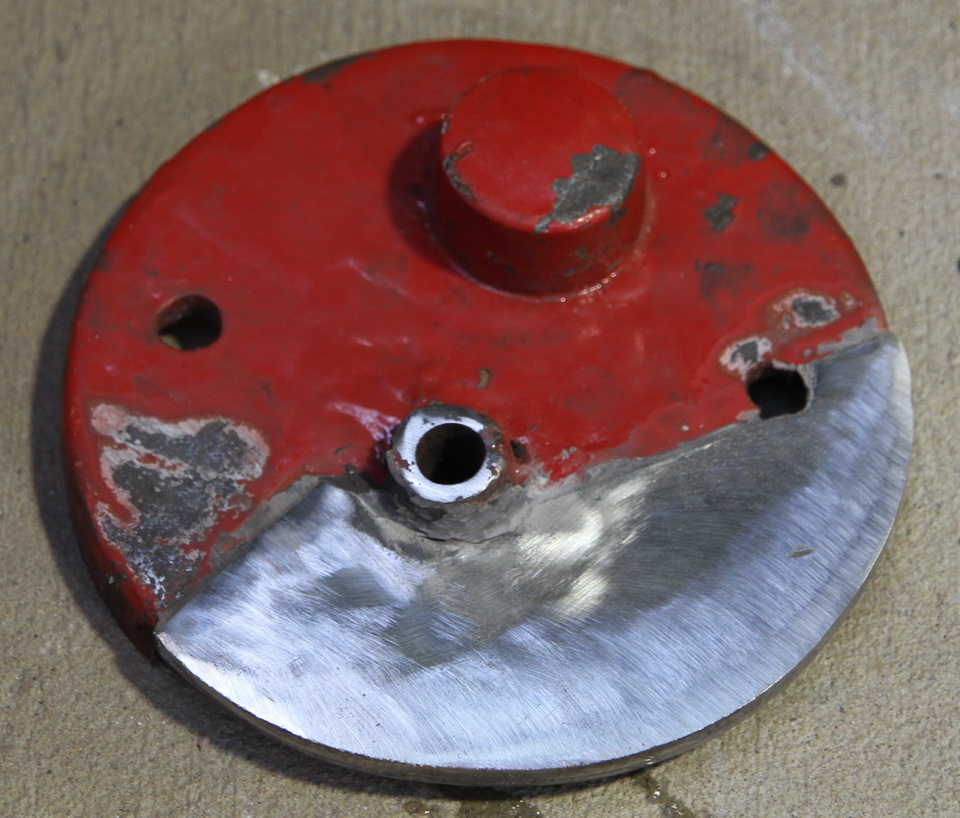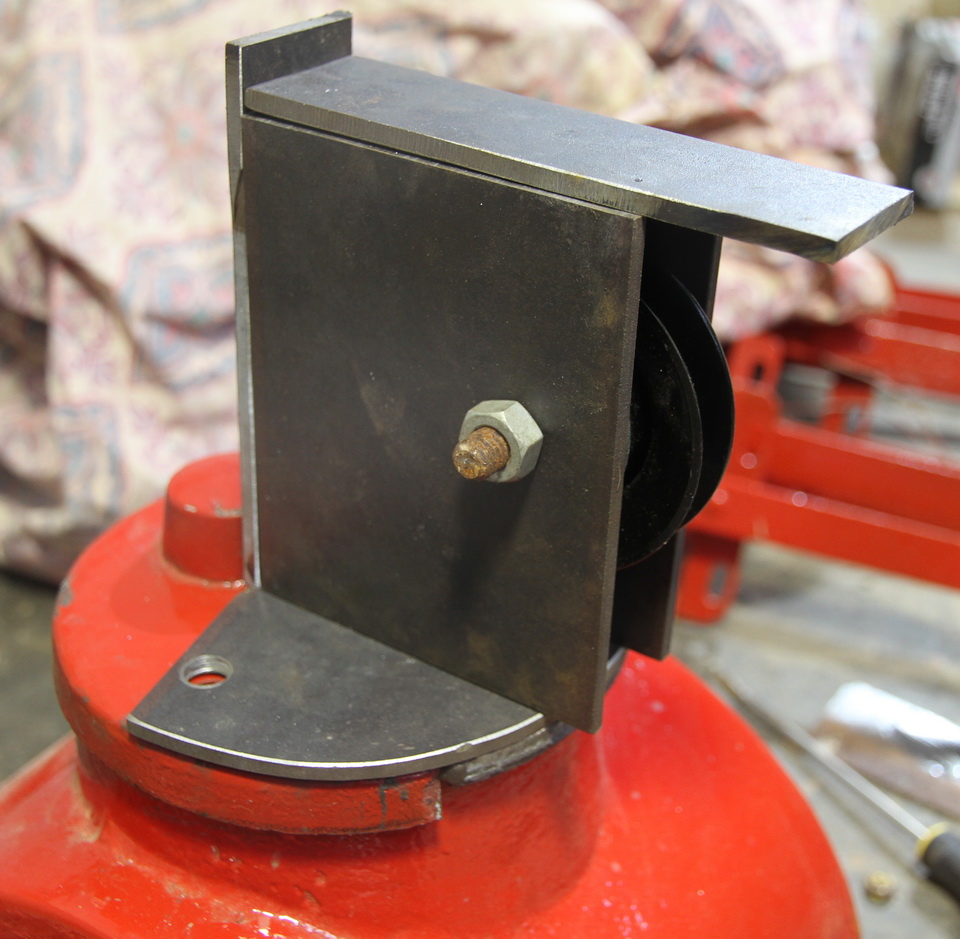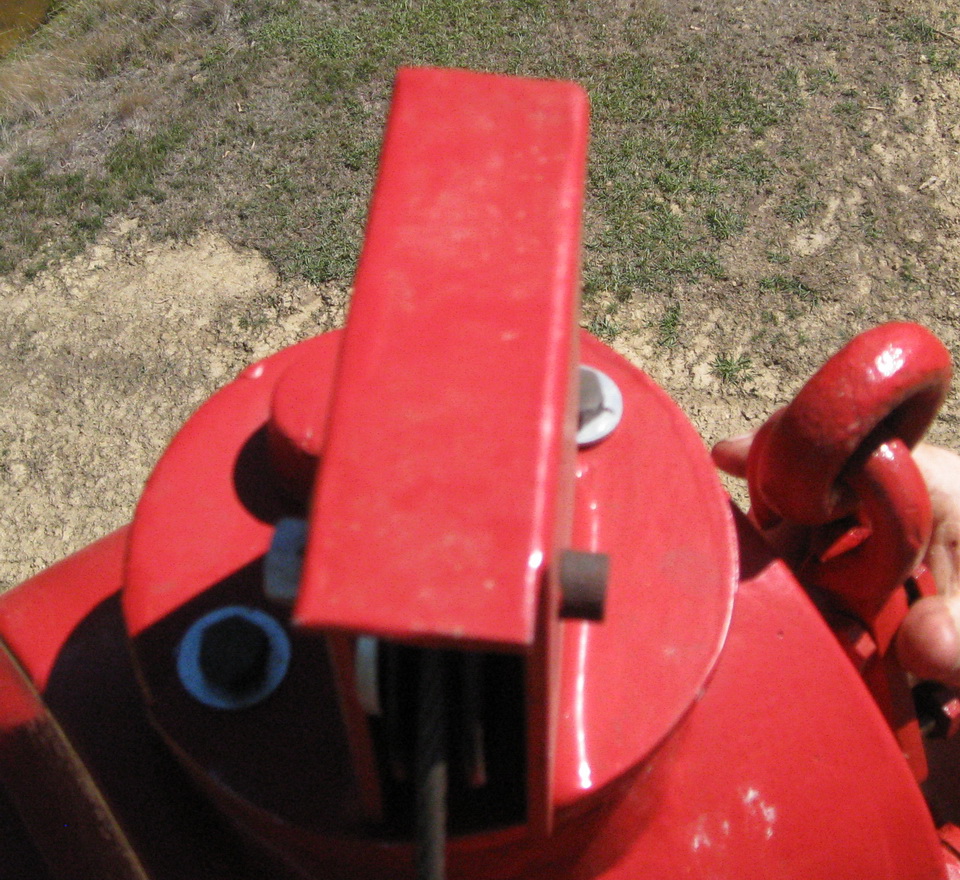Bryan Windmill Restoration the Missing Part
From the material I had been given from the The Morawa District Historical Society one of which was the patent application of 1924, and a copy of The Windmill Journal History of Australian & New Zealand Windmills Vol 6 No4 December 2007. I had a good idea of how the windmill worked and what was missing.
The Patent stated that "a chain for operating the tail vane may pass around one or more pulleys one of which is accommodated within a shroud mounded on the upper section of the gear box so as to cover an opening formed in the top of said upper section the chain passing through said opening and downwardly through the hollow pump rod."
This is what it looks like on the windmill that Theo Cook has in his park.

What I had was half of the top section. Which meant I had to fix that part and fabricate the pulley chamber that fitted on top. I started by making a cardboard piece that fitted the broken profile which initially was round. I was lucky in that this piece bolted to the top hat cover which was not broken and still had the threaded bolt holes.

As this piece really didn't really need to have real strength to it, I just needed to make it the same thickness as the cast piece so it all bolted down evenly. I used a liquid steel weld epoxy to join the two halves. As welding cast iron is not my speciality.

I then decided to fabricate a pulley and holder that would fullfill the function of the patent. I also made the decision to change from chain to 6mm steel rope as this was much more flexible and would run through the pulleys with greater ease.

This new housing actually covered the hole completely in the cover below and the steel rope could travel down through this hole then down the pump rod. The housing had to be fixed at an angle that went to the next pulley then to the tail vane. This housing was all made from 6mm steel and was welded up rather than glued.
It would also have the two holes in its base that would bolt the two top pieces to the Top Hat cover.
Next is restoring the tail vane.
